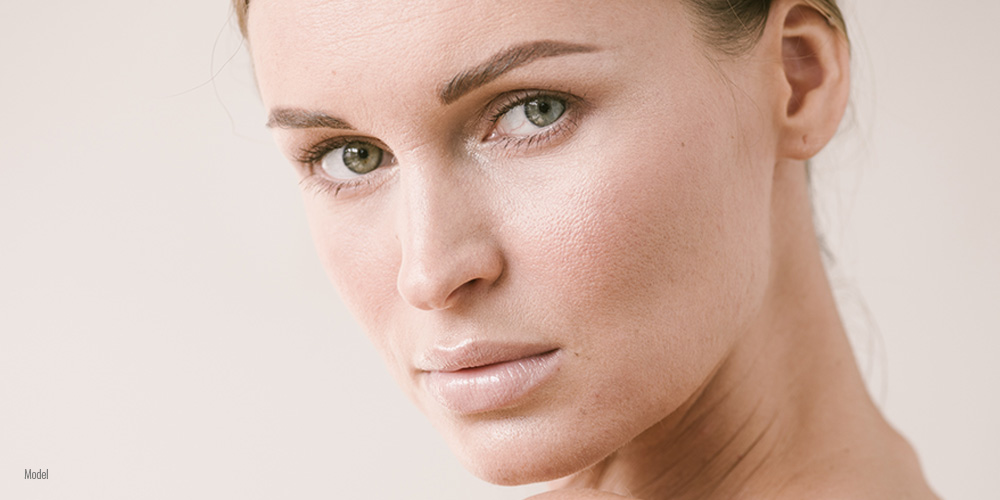
Rhinoplasty is a cosmetic procedure that can address any concerns you have about your nose shape, projection, and size, and it can greatly impact the overall balance and harmony of your other facial features. Because the surgery deals with hard, bony cartilage and internal structures of the nose, recovery—and sleep—are crucial. This blog discusses how to protect your nose while you sleep and other important tips for rhinoplasty recovery.
4 Min Read:
Rhinoplasty Recovery 101
All plastic surgery requires the patient to care for themselves during recovery, as a restful recovery allows the body to properly heal and yield better surgical outcomes. Rhinoplasty requires somewhat more care than other facial enhancement procedures, as the structure of the nose must be protected and maintained to preserve the results of surgery.
Following rhinoplasty, patients can expect swelling, bruising, and discomfort. A splint is usually used to help the healing nose keep its shape, which is gradually downgraded as healing progresses. Swelling lasts much longer after rhinoplasty, as it deals primarily with bony cartilage and tissues. This is a typical reaction, as swelling is a natural response to trauma—inflammation and fluid retention aid in protecting the body and helping it to heal.
Part of the rhinoplasty recovery rules involve protecting the nose from pressure, which means that contact sports, physical activity, and strenuous exercise are prohibited. Sleep, too, is closely regulated.
Why Is It Important to Sleep Properly After Rhinoplasty?
Restful sleep is key to an effective recovery from any plastic surgery procedure, not just rhinoplasty. Your body repairs itself as you sleep, so a restful sleep is essential to speeding up the process. With rhinoplasty, you have to be careful how you sleep, as certain positions can have adverse effects on your recovery and results, while others are actually beneficial for speeding recovery along.
Rhinoplasty Recovery Sleep Tips
The ideal sleeping position post-rhinoplasty is on your back with your head slightly elevated. This helps in a few ways: fluid retention and swelling are reduced, blood circulates more effectively, and you protect the nose from undue pressure.
Sleeping on your stomach is absolutely prohibited, as it can increase your risk of causing damage to your healing nose and potentially reversing your results. Side sleeping similarly should be avoided, as it can put more pressure on your nose and cause asymmetries or more damage to occur. Although you may accidentally roll over in your sleep, take as many precautions as you can to avoid it. It may be helpful to use pillows or cushions to create a barrier for yourself to keep you in the correct position.
Not everyone is a natural back sleeper, and you may have other obstacles that make this difficult for you. But because this is very important to your recovery, it’s worth the effort. Some tips for rhinoplasty sleep include:
- Practice back sleeping before surgery. You can train yourself to sleep in a different position than you’re used to, although it takes some time. We recommend trying your new sleep set-up for a few weeks prior to surgery: get your cushions and pillows and set them up under both arms or below your knees. This should deter you from rolling over in your sleep, but if you do, be sure to roll back.
- Sleep alone. Once you return from surgery, you should sleep solo for a few weeks if you usually share a bed with another person or pet. It may seem drastic, but accidental bumps to the nose from an elbow or paw would not only be painful—it could have adverse effects on your healing process and results. You’re investing a lot of money and time to better your appearance and increase your self-confidence; you should be mindful of any risks to your investment!
When Can I Sleep On My Side After Rhinoplasty?
When you begin rhinoplasty recovery, prepare for the long haul. You’ll likely have your more sturdy splint removed after one week post-op, which may be downgraded to light gauze and tape, which will eventually be removed entirely.
Most of your recovery will deal with waiting for swelling to subside, which, for rhinoplasty, can last up to a year post-op. Your surgeon will likely give you a recommendation for when you can sleep however you like—which will probably be at least a few months out from surgery, possibly a year.
The important thing to remember is that with practice, sleeping on your back will be more and more natural, and the longer you practice healthy rhinoplasty sleep, the better your recovery and results will be.
To stay on the safe side, sleep on your back for as long as possible after rhinoplasty to protect your healing nose—and hey, you might adopt a sleep style that is better for your back health and reduces facial wrinkles in the process!
Interested in Rhinoplasty in Beverly Hills, CA?
Dr. Jason Diamond is Beverly Hills’ celebrity facial plastic surgeon, providing stunning facial surgery results with decades of experience and unparalleled surgical talent. You’ve only got one face—entrust it only to the best. Call the Diamond Face Institute today at (310) 859-9816 or fill out our contact form to schedule a consultation.

